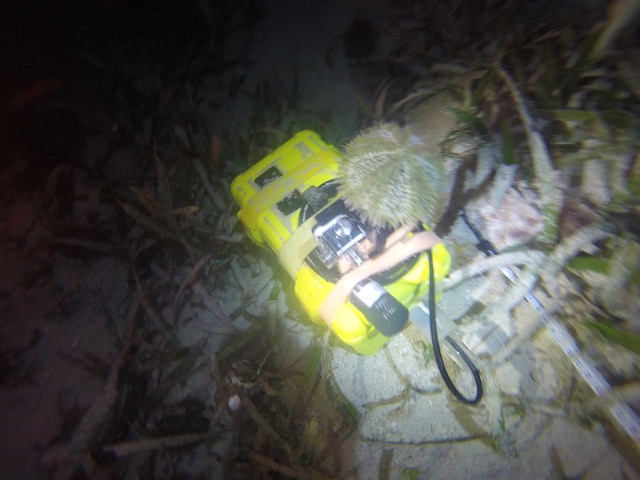
This is a photo of the red lights set up around the recording device as a means of illuminating the sea floor with out interfering with the natural behaviors of different organisms.
Diving into an underwater world is like visiting a different planet, every thing is different from the colors to the creatures. Sight is most commonly used to explore this world but Colin Wirth (a grad tudent in the Warren lab) is trying to unlock the mystery of sounds. Because of the density of water sound travels faster and further allowing you to hear waves crashing, fish feeding and moving, and shrimp hunting. This sources of this symphony changes following a diurnal pattern making identifying the night time sounds much harder because you can not see what is going on. In order to overcome this problem Colin (our TA) constructed a “red light district” to illuminate the sea floor. Fish and other sea creatures can’t see these red lights creating an environment where their natural activates can be carried out un impeded by our recording. This “red light district” was constructed by a series of eight red LED lights placed into the sand bottom shining down to the sea floor with two acoustic recording device synced to their own GoPro. The site was left alone for an hour allowing the natural activities of these creates to continue. The hope is that the source of the sounds recorded can be identified using the video footage revealing who’s playing what instrument in the sea.

This is a photo of the recoding devices that where deployed for one hour. The yellow box contains the acustic recording device with the microphone connected to the top. The GoPro is mounted facing the the direction the red lights are shining.

This is a photo of the recoding devices that where deployed for one hour. The yellow box contains the acustic recording device with the microphone connected to the top. The GoPro is mounted facing the the direction the red lights are shining.
– Will

